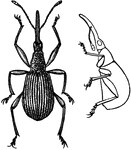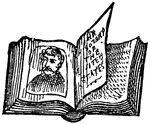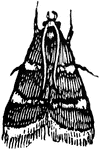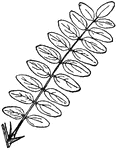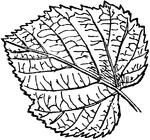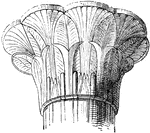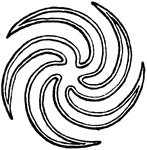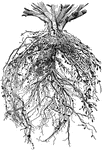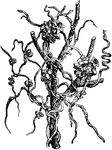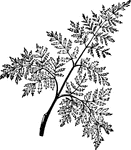Sword
A type of sword called cleddyo. Usually made of bronze and having a "leaf shape" form. the tounge being…
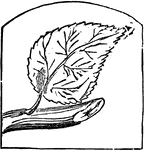
Leaf
One of the three principal parts or organs of vegetation, generally flattened in shape, and greenish…

Bean Plant in Jar
"The bean with its roots in unboiled water will grow for a considerable time, as long as the mineral…
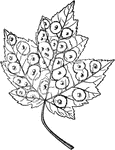
Maple spot gall
"The maple spot gall, so common on the leaves of the red maple, is made by the fungus-gnat of the order…
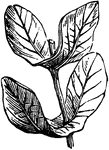
Connate Leaves
A leaf in which the lower lobes are uniteed, either above the stem is sessile or above the petiole if…
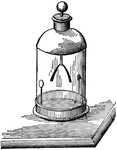
Electroscope
"The electroscope is an instrument for detecting and testing electrification. A metallic rod passes…
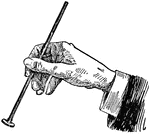
Hand with Proof-plane
"A proof-plane may be made by cementing a bronze cent or a disk of gilt paper to a thin insulating handle,…
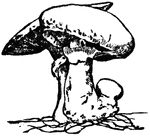
Toad-stool
"Many cells, but without differentiation into stem and leaf; growing horizontally in spreading shoots…

Reichstag
"It is a gorgeous structure decorated with statues, carvings, and gold leaf, situated close by the Thiergarten."…

Edward Lear's Rhymes
There was an old person of Dover, who rushed through a field of blue clover; But some very large bees…

Pear Design
"Also known as the cone, the palm leaf, the river loop, the crown jewel, the seal, the almond, the feather,…
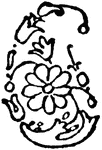
Pear Design
"Also known as the cone, the palm leaf, the river loop, the crown jewel, the seal, the almond, the feather,…

Pear Design
"Also known as the cone, the palm leaf, the river loop, the crown jewel, the seal, the almond, the feather,…

Pear Design
"Also known as the cone, the palm leaf, the river loop, the crown jewel, the seal, the almond, the feather,…
Pear Design
"Also known as the cone, the palm leaf, the river loop, the crown jewel, the seal, the almond, the feather,…
Pear Design
"Also known as the cone, the palm leaf, the river loop, the crown jewel, the seal, the almond, the feather,…
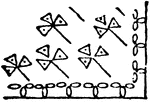
Rhodian or Lily Design
Composed of small flowers with three triangular petals and a long stem. Has the appearance somewhat…
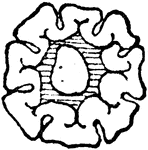
Rhodian or Lily Design
Composed of small flowers with three triangular petals and a long stem. Has the appearance somewhat…

Rhodian or Lily Design
Composed of small flowers with three triangular petals and a long stem. Has the appearance somewhat…
Rhodian or Lily Design
Composed of small flowers with three triangular petals and a long stem. Has the appearance somewhat…

Peltate
A shield-shaped that is with the stalk attached somewhere within the circumference of the leaf or other…
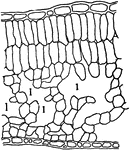
Apple Leaf
A magnified portion of an apple leaf. It shows many small sacks grown together. Each of these sacks…
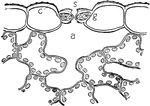
Stoma
This illustration shows a section across a stoma. The stoma is the tiny opening or pore, found mostly…

Aralia
A genus of the plant family Araliaceae, consisting of about 30 species of deciduous and evergreen trees…
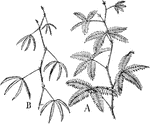
Mimosa
Figure A shows the leaf position of the light sensitive plant, Mimosa in sunlight. Figure B shows it…
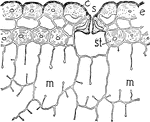
Pine Leaf
This image shows the cross-section of the outer cells of a leaf of pine. S, stoma; E, epidermis; C,…
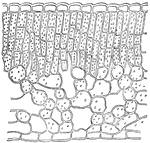
Rhododendron
This illustration shows a section of a leaf of Rhododendron. Note the compact palisade tissue which…
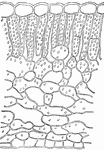
Spathyema
This illustration shows a section of the leaf of skunk cabbage, Spathyema. Note the poorly developed…
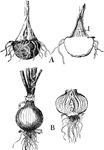
Onion
This illustration shows the shortened types of stems: A, corm of jack-in-the-pulpit. At left surface…
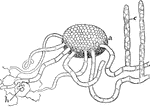
Mycelium
This illustration shows an enlarged view of the mycelium, ascocarp, etc., of one of the mildews, Erysiphe:…
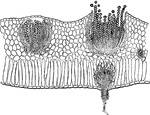
Claytonia
This illustration shows cluster cups in a section of a leaf of spring beauty. At right one of the cups…
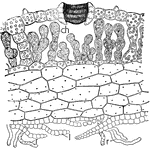
Marchantia
This illustration shows a section through the center of the thallus of Marchantia, showing one of the…
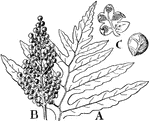
Onoclea
This illustration shows the sensitive fern, Onoclea: A, portion of normal green leaf. B, a spore-bearing…
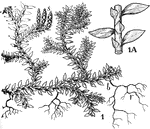
Selaginella
This illustration shows a common cultivated Selaginella: I, habit of the plant-s, strobili; b, a branch…
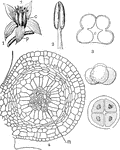
Angiosperm
This illustration shows the flower and sporophylls of Angiosperms: 1, flower of Sedum with leaf-like…
White Lily
This illustration shows a radical leaf of the White Lily, with its base thickened into a bulb-scale,…
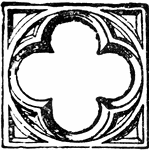
Quatrefoil
In architecture, a piercing or panel divided by cusps or foliations into four leaves, or more correctly…
